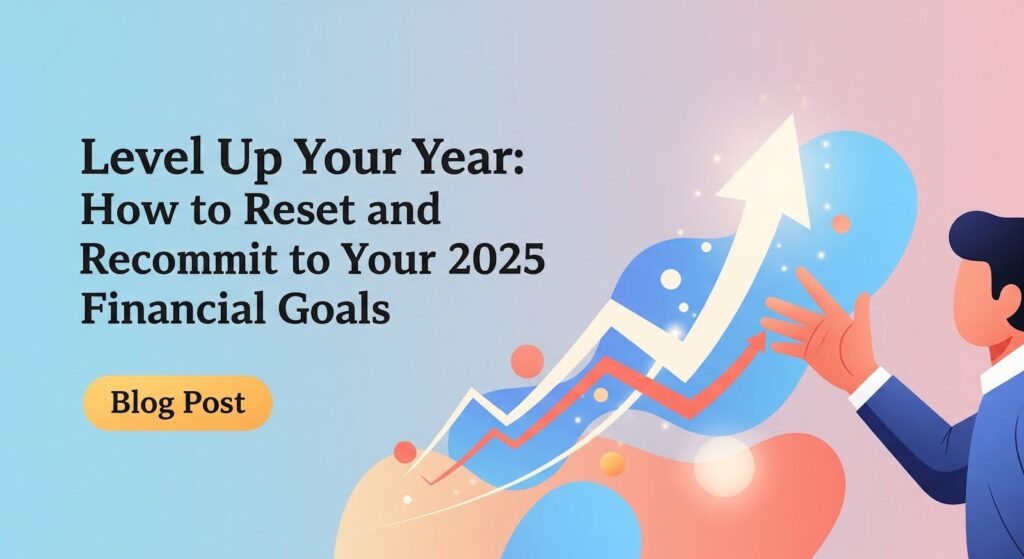The Power of Automation: Building Wealth One Deposit at a Time

The Case for Automation in Personal Finance
If you’ve ever struggled to save money consistently, you’re not alone. Life gets busy, expenses add up, and saving often takes a back seat. But what if you could take the stress, guilt, and guesswork out of the equation entirely?
That’s where automation comes in.
Automating your savings—especially by assigning a fixed percentage of your income—removes the need to “decide” to save every month. It becomes a habit without effort, and over time, that consistency builds momentum. The result? Financial growth, reduced anxiety, and a system that supports your goals without micromanagement.
At Level Coaching, we help clients create smart, customized plans that include automation at the core. Let’s explore why it’s so effective—and how you can start using it to your advantage today.
Why Automate Your Savings?
Imagine this: every time your paycheck hits, a pre-set amount of money quietly moves into one or more savings accounts. No logging in. No mental math. No “I’ll do it next week.”
Just progress.
Here are the core benefits of automated savings:
1. Consistency Without Effort
Manual transfers rely on willpower. But willpower is a limited resource. Automated transfers happen regardless of how busy or distracted you are. It creates a consistent pattern that builds wealth over time—without requiring your attention.
2. Paying Yourself First
When savings happen automatically, it shifts your mindset. Instead of saving what’s “left over,” you’re prioritizing your financial future before spending. This small change has a huge impact on long-term wealth building.
3. Avoiding Lifestyle Creep
As your income grows, so should your savings rate. Automating a percentage instead of a flat amount ensures you’re increasing your savings as your earnings rise—without even noticing.
4. Reduced Stress
Financial decision fatigue is real. Automation reduces daily decisions and emotional spending by enforcing guardrails that support your goals.
How Much Should You Automate?
A great starting point is the 50/30/20 rule:
- 50% of income toward needs (housing, food, transportation)
- 30% toward wants (dining out, entertainment)
- 20% toward savings and debt repayment
That 20% can be broken down into:
- 10% for emergency fund or long-term savings
- 5% toward a retirement account or investment
- 5% toward short-term goals like travel or holidays
But here’s the key: even if you can’t start at 20%, start somewhere. Even 5% automated is better than nothing.
As your income or stability increases, increase your auto-savings rate. Make it a rule: every raise deserves a raise in savings.
Multiple Nest Eggs: The Smarter Way to Save
Most people think of “savings” as one big lump sum—but the best savers think in buckets or goals.
Creating multiple “nest eggs” ensures your money has purpose, and you don’t accidentally dip into your emergency fund for a vacation or holiday shopping.
Here are the most common savings buckets we recommend:
1. Emergency Fund
- Goal: 3–6 months of expenses
- Use: Unexpected medical bills, car repairs, job loss
- Best account type: High-yield savings account (HYSA), easily accessible but earns some interest
2. Short-Term Savings
- Goal: 6–24 months
- Use: Vacations, weddings, holiday gifts, large purchases
- Best account type: HYSA or regular savings account
3. Mid-Term Goals
- Goal: 2–5 years
- Use: Down payment on a house, business launch, new car
- Best account type: CD (certificate of deposit) or money market account for better returns with low risk
4. Long-Term Goals
- Goal: 5+ years
- Use: Retirement, child’s college, investment property
- Best account type: IRA, Roth IRA, or brokerage account (not for short-term savings)
Labeling your savings this way helps you stay clear on what each dollar is for—and reduces the temptation to use it for something else.
CD vs. Savings Account: What’s the Right Fit?
When deciding where to park your savings, two common options are regular savings accounts and certificates of deposit (CDs). Both are low-risk and FDIC-insured, but they serve slightly different purposes.
Here’s a side-by-side comparison:

Savings accounts are ideal for flexibility, while CDs are better if you want to lock in your money and earn more interest with less temptation to touch it.
At Level Coaching, we often recommend a mix of both, depending on your timeline and goals.
Tips to Maximize Your Automated Savings Strategy
Align Automation With Paydays
Set your transfers to occur the same day you get paid—before you have a chance to spend. This reinforces the idea that saving comes first.
Use Multiple Accounts
Open different accounts for different goals and nickname them (e.g., “House Fund,” “Paris 2026,” or “Emergency”). It helps you stay clear and motivated.
Check in Quarterly
Set a reminder to review your auto-transfers every few months. Adjust your percentages if your income or priorities change.
Use a Financial Dashboard
Use a free tool like Mint, YNAB, or your bank’s app to track how your automated savings are growing. Visualization reinforces good habits.
Celebrate Small Wins
Saving $500 might not feel exciting—but it’s huge progress. Celebrate milestones like your first $1,000 saved or first fully funded goal. This keeps motivation high.
The Psychology Behind Automation
Beyond the math, automation is a psychological hack. It removes your emotions and habits from the decision-making process. You don’t need to “try harder” to save—you just set it and let the system do the work.
This is powerful because:
- You don’t have to rely on willpower
- You eliminate the risk of “forgetting” to save
- You train your brain to function in scarcity-mode spending rather than spending all income and saving “whatever’s left”
This creates a strong foundation for building wealth—automatically.
Final Thoughts: Build a Life That Saves While You Sleep
We live in a world where everything can be automated—bill payments, coffee orders, even grocery delivery. Why not automate your financial success, too?
At Level Coaching, we believe that a truly financially fit life is one that works for you in the background. Automated savings is one of the easiest, smartest ways to make that happen.
Whether you’re saving for something big or just trying to get ahead, let automation do the heavy lifting. You’ll build consistency, protect your future, and create peace of mind—all while focusing on what matters most: living your life.
Written by Nichole Olds,
August 2025






Responses